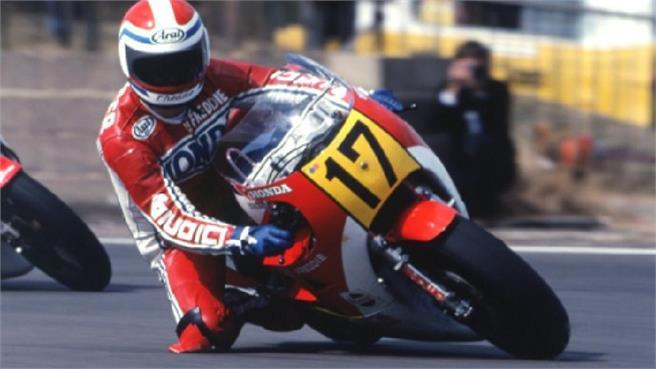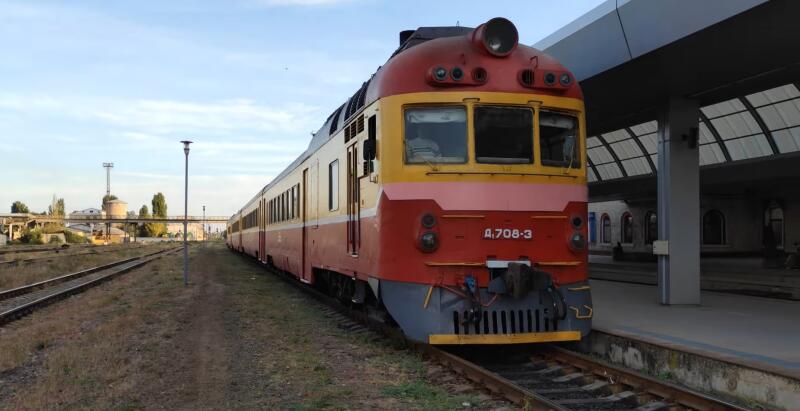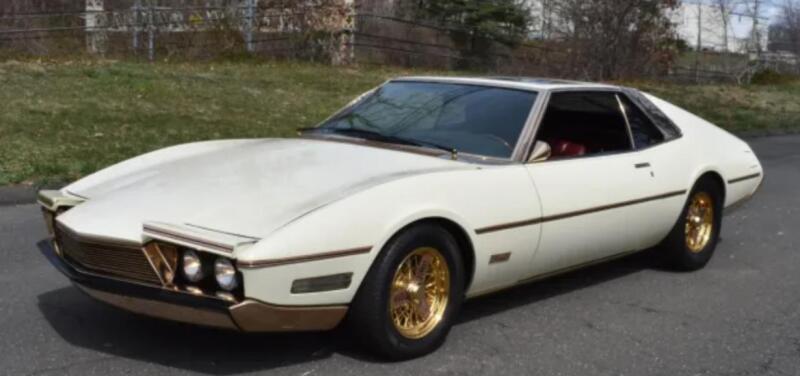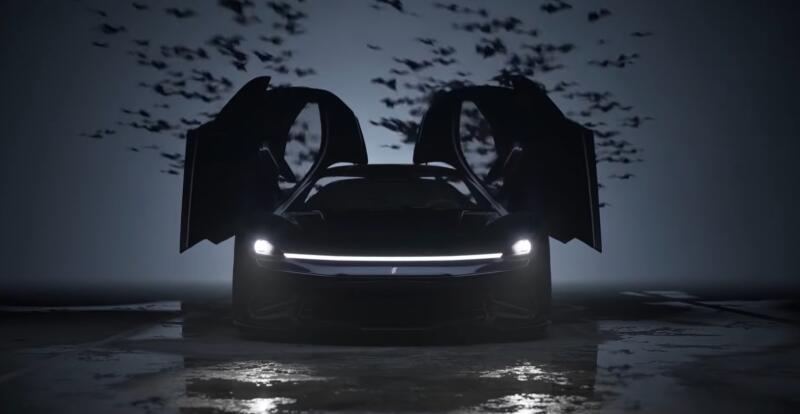Actually, in fact, eight valves per cylinder is not a cause, but a consequence. The Japanese turned all this fuss solely because of the whim of their supreme leader, Soichiro Honda, who passionately disliked two-stroke engines, but loved multi-cylinder 4-stroke engines. It was he who ordered the Grand Prix World Championship to be abandoned after the FIM allowed two-stroke engines for the XNUMXs.
 Honda NR500 and Mick Grant. Photo: Youtube.com
Honda NR500 and Mick Grant. Photo: Youtube.comNow imagine: the end of the seventies, you are an engineer of the motorcycle division of Honda and your task is to create a four-stroke engine that can compete with two-stroke "XNUMX" in MotoGP races. Notice, with the same working volume!
Mission Impossible
In theory, it is impossible to achieve equal power under such conditions, because two-stroke engines will be one and a half, or even two times more powerful than four-stroke ones. It comes from the very essence of these engines. Why is 2t more powerful? Imagine two single-cylinder engines: 4t and 2t. For the first, every fourth cycle is a worker, and for the second, every second.
4t
✅ Intake
✅ Compression
✅ Working stroke
✅ Release
2t
✅ Compression
✅ Working stroke
While your horse has four legs: one-two-three-four, the boy on two legs: one-two, one-two.
- the famous phrase from the cartoon "Last year's snow was falling" perfectly demonstrates the difference.
It is the same in our case: with two strokes, the ignition of the mixture occurs with each revolution of the crankshaft, and with a four-stroke, after one, respectively, the motors produce less energy of 4t.
How to achieve the impossible
It turns out that creating a 4t engine capable of overcoming a 2t engine with an equal working volume and number of cylinders is a task from the realm of fantasy. But Honda tried to do it!
 The final version of the NR500 lost its monocoque frame. Photo: Youtube.com
The final version of the NR500 lost its monocoque frame. Photo: Youtube.comIn order to achieve comparable performance with 2T motors of competitors, Honda engineers had to reach at least 20 rpm. – the level reached in Formula 000 in 1! Otherwise, one could not even dream of any prospect of defeating the two-stroke Yamaha and Suzuki!
In those years, Honda engineers firmly believed that the best way to increase engine power was to increase the number of cylinders. Therefore, in MotoGP they decided to use a V8 engine. And since the regulations had a clear limit on the number of cylinders, they were combined in pairs! The result was a V4 engine with oval pistons, which had 8 connecting rods (two in each cylinder), 32 valves and 8 spark plugs!
 Sectional oval piston engine. Photo: Youtube.com
Sectional oval piston engine. Photo: Youtube.comInitially, the concept of an oval piston engine raised doubts about whether it could achieve its design performance in real conditions. Will it be possible to effectively cool the engine so that the pistons do not deform under the influence of high temperatures. Piston rings became a real headache at all, since the oval shape was very difficult to machine. Experiments with them were repeated again and again, by trial and error ...
Technical specifications
✅ Honda 0X engine
✅ Configuration: V4 100º
✅ Estimated power: 130 HP With. at 23 rpm.
The oval piston measured 93,4 mm x 41 mm. and was equipped with two connecting rods, with a super short stroke of 36 mm. During tests, the engine reached 19 rpm, which made it possible to count on power comparable to five-hundred two-stroke engines. True, the same tests showed that the miracle motor is prone to self-destruction at a set of 500 revolutions, due to twisting of the paired connecting rods.
By the way, two-stroke engines of those years produced 120 horsepower, at 10 rpm: 000 hp. With. per liter of working volume! Therefore, the Honda engineers faced a difficult, almost impossible, task that no one had ever faced before. For example, in the same Formula 240, a similar level of forcing was reached in 1.
Honda New Racing
The development of the NR500 was completed in July 1979, and the Japanese claimed the power of the V4 with oval pistons was 100 hp. With. at 16 rpm. Of course, compared to competitors, this was not enough! Honda MotoGP riders were Mick Grant, winner of one grand prix for Cagiva, and Takazumi Katayama, 000 world champion in the 1977 cm class3.
 Test drive Honda NR500. Photo: Youtube.com
Test drive Honda NR500. Photo: Youtube.comThe first test for New Racing Honda was the 11th round of the 1979 World Championship held in the UK. The riders of the team qualified with great difficulty, and in the race both were waiting for retirement: Grant fell on the very first lap after the start, Katayama retired after a few laps due to ignition problems. Here's what Mick had to say about the debut of the Honda NR500:
Honda knew that we would be the last, but did not want it. Therefore, before the race, we were only refueled for a couple of laps, so that we put on a show, and then retired. I was unable to start the engine the first time. When the engine did start, I jumped on the motorcycle past the saddle, almost to the very edge. The bike immediately climbed onto the rear wheel, which none of the testers had done with it before! It turned out that in such conditions the crankcase ventilation breather sprayed oil on the rear wheel: that's why I fell. After that, Mr. Fukui told me, "No more Willies."
At the French Grand Prix, the twelfth race of that year, both bikes failed to qualify at all! After ending the 1979 season with disappointing results, Honda engineers found that in addition to no reliability and power, the NR500 had a couple of serious problems.
 Model of the engine in the Honda Museum. Photo: Youtube.com
Model of the engine in the Honda Museum. Photo: Youtube.comFirst, engine braking caused the rear wheel to chatter! The specific problem of a four-stroke engine! To counteract this, the team developed the "reverse slip clutch". This technology was later used in the VF750F, making it the first production motorcycle to feature such a device.
Secondly, a slow, relatively two-stroke engines, a set of revolutions. Again, this in itself is an advantage, allowing for more precise dosing of traction in corners. But not when the engine has to spin up to 20 rpm! While the 000t Honda was “accelerating”, the 4t competitors ran into a cutoff!
At the same time, in terms of peak performance, the Honda was at least ten horsepower behind the two-strokes. The revised engine for the 1981 season had a smaller cylinder block, made possible by a reduction in the camber angle from 100 degrees to 90. In addition, power was now up to 130 hp. With. at 19 rpm. It was he who brought the Honda NR000 the first victory.
Suzuki 200 kilometers, 1981
One of the advantages of four-stroke engines is fuel efficiency. And, unlike the two previous "advantages", Honda used this quality in full.
In the 200km race at the Suzuka circuit, the NR500 riders were able to stop to refuel less frequently than the two-stroke competitors! Honda gradually moved forward until it gradually came out on top. Kengo Kiyama kept the lead until the end of the race and won.
Three years into development, the New Racing Honda team and the NR500 have finally won!
In 1982, a modified 2X engine reached 135 horsepower - 4t engines with oval pistons caught up with rivals in power. But by that time, it was obvious that it was impossible to compete in MotoGP with two-stroke Yamaha and Suzuki, and Honda decided to switch to two-stroke engines.
Honda ns500
The NS two-stroke series gradually completely replaced the NR, at the same time Honda began to play a dominant role in the world motorcycle racing scene. "Flying" Freddie Spencer rode an NR500 in 1981, and even led the race for five laps! In addition, he set the best lap. But he had to retire due to electrical problems: reliability remained a big problem with the "oval" motor! Therefore, in 1982, Freddie switched to a two-stroke Honda NS500 and immediately took third place in the world championship. And the following season, driving this motorcycle, Spencer became the world champion.
 Switching to a two-stroke Honda, "Flying" Freddie Spencer became world champion on his second attempt. Photo: Youtube.com
Switching to a two-stroke Honda, "Flying" Freddie Spencer became world champion on his second attempt. Photo: Youtube.comWhen creating a revolutionary engine, Honda was faced with the need for too much research and development in various directions. First of all in metallurgy. And yet, the creation of an engine with oval pistons showed what Honda engineers are capable of without any restrictions.
As a result of the development, the New Racing teams migrated to serial production. First of all, we need to mention multi-point electronic fuel injection and a reverse slip clutch. The dominance of two-stroke motorcycles in MotoGP continued until the early 21st century. Only in 2002 did a four-stroke motorcycle racer become the champion. Needless to say, this motorcycle was Honda?










